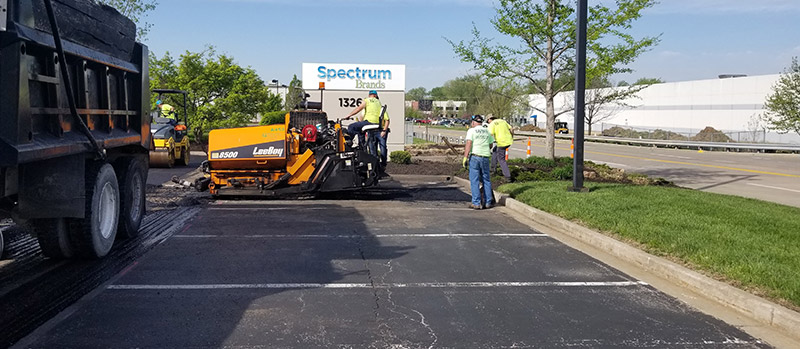The A1 Professional Asphalt & Sealing Llc Diaries
The A1 Professional Asphalt & Sealing Llc Diaries
Blog Article
Some Known Incorrect Statements About A1 Professional Asphalt & Sealing Llc
Table of ContentsAn Unbiased View of A1 Professional Asphalt & Sealing LlcThe 15-Second Trick For A1 Professional Asphalt & Sealing LlcThe Greatest Guide To A1 Professional Asphalt & Sealing LlcAll about A1 Professional Asphalt & Sealing LlcA1 Professional Asphalt & Sealing Llc - The Facts

The oil in a car engine is not simply oil. The REOB has all the additives that were in the waste oil as well as the wear metals from the engine (primarily iron and copper).
By making lots of blends making use of various REOB examples and different asphalt binders, the variants mainly can be balanced out. Several States gave samples of recognized REOB composition to TFHRC researchers, that assessed the examples to contrast the percentage of included (known) REOB to the located (examined) amount. The analyses revealed a comparable percent of added and found REOB.
The Definitive Guide to A1 Professional Asphalt & Sealing Llc
They got a frustrating response. The TFHRC scientists evaluated 1,532 examples from 40 States, one Canadian district, and 2 Government Lands Freeway divisions. They assessed each example twiceamounting to more than 3,000 analyses. None of those States recognized that the asphalt they were buying included REOB. One State urged its samples had no REOB.
Of the 1,532 examples checked, 12 percent consisted of REOB, and some contained appreciably high levels of it at 1020 percent. The highest degree was 34 percent in a sample from Texas, which TxDOT had used in a patching substance. This screening additionally exposed the existence of phosphoric acid in 11 percent of the examples, and 2 percent consisted of ground tire rubber.
Two years back at TRB's annual conference, the Federal scientists held an REOB workshop and presented the findings of their lab assessments to a standing room-only crowd. Although some companies do not particularly ban REOB, they do enforce physical tests that prevent its useeffectively a ban. what is cold asphalt?. Others do not prohibit it by requirements, yet have agreements with asphalt suppliers to prevent using REOB
The smart Trick of A1 Professional Asphalt & Sealing Llc That Nobody is Discussing
Ohio and Texas limitation degrees to less than 5 percent of the asphalt. To create a dependable examination technique that all States can make use of, the TFHRC researchers established up a round-robin examination plan.
The participants are evaluating the examples independently utilizing the guidelines provided by the TFHRC researchers. The result will be a suggested AASHTO examination technique that any type of State can take on and use.
The pavement with REOB, which is situated 0.6 mile (1 kilometer) from the sidewalk without REOB, has the same subgrade, traffic density, and environment. The section of Highway655 with 5 to 10 percent REOB revealed significant cracking. In this example, the presence of REOB was the recognized source of breaking at a reduced temperature levels.
A section of test sidewalk in Minnesota (MN1-4) located to include REOB also cracked too soon. The sidewalk carried out well for the first 3 to 4 years, but after that started to split.
A1 Professional Asphalt & Sealing Llc Fundamentals Explained
The examinations were not comprehensive, however they revealed that at degrees of 6 percent or even more, the tensile stamina of the asphalt went down considerably. At a degree of 3.5 percent REOB, the variant in the physical test approaches was more than the result of REOB. In truth, it was tough for scientists to evaluate whether REOB was existing.

One binder specification taken into consideration is the distinction between the low temperature critical spec temperature for rigidity (S) in the flexing light beam rheometer and the bending beam rheometer creep slope (m-value) kept in mind as Tcritical. TC = TC (S) TC (m-value). Evaluation of this parameter is still ongoing. Two independent research teams, one from AASHTO and the other from the Asphalt Institute, ended that more research study is required on using REOB in asphalt.
Previously, this content all asphalt screening gauged design buildings such as tightness. These tests do disappoint what products had actually been added to the asphalt. One example gotten throughout the TFHRC study had a very weird analysis. The example had the adhering to test results: Superpave PG 64-28 with a high temperature level grade of 67.3 Tcritical on the flexing light beam rheometer was 6.7 degrees Celsius.

A1 Professional Asphalt & Sealing Llc Things To Know Before You Buy
These outcomes show there are weaknesses in the standard design testing protocols that may be exploited. The producer may have a financial advantage and the item passes all the standard examinations, however the item might not be valuable to making sure lasting efficiency. To address this problem and the development of brand-new asphalt additives and extenders, TFHRC is starting a research program to make use of handheld spectroscopic tools, x-ray fluorescence spectroscopy, and Fourier change infrared spectroscopy to make it possible for evaluations to be done in the field rather than having to take samples back to the laboratory.
Report this page